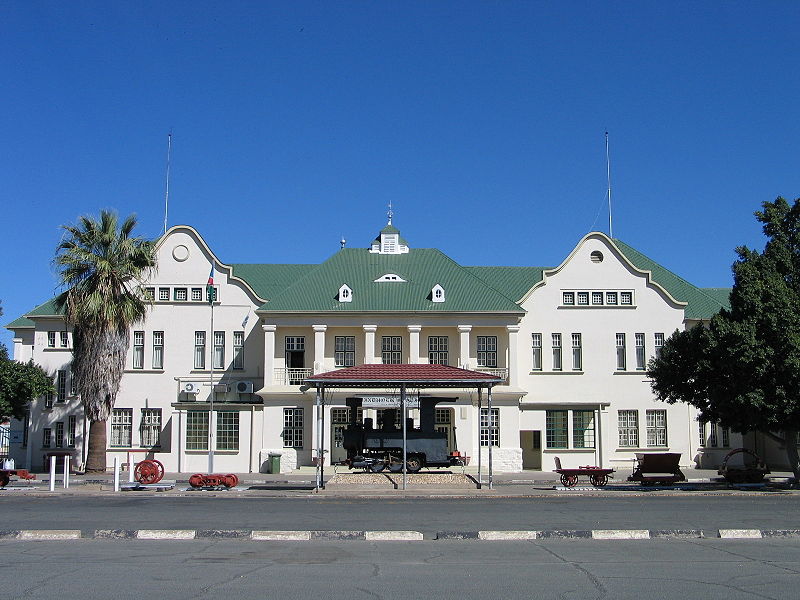Namibia, a country located in the southwestern region of Africa, is known for its vast deserts, diverse cultures, and rich natural resources. However, one of the lesser-discussed yet significant aspects of Namibia’s history is its German colonial legacy. From the late 19th century until World War I, Namibia was a German colony known as German South West Africa, and this period has left a lasting impact on the country’s political, social, and cultural landscapes.
This article explores the historical context and significance of Germany’s colonial rule in Namibia, its lasting influence on the country, and how this legacy shaped the European community in Namibia, including the descendants of German settlers, the Afrikaner community, and broader relations between Namibia and Germany today.
German Colonization in Namibia
Germany’s involvement in Namibia dates back to the 1880s when the country was still part of a broader “scramble for Africa” by European powers. In 1884, Germany officially declared Namibia a protectorate under the name German South West Africa. This marked the beginning of a colonial relationship that would last until the end of World War I in 1915. The primary motivations behind German colonialism were economic and strategic, with the Germans seeking to establish a presence in southern Africa to exploit the region’s natural resources and provide a market for European goods.
German rule in Namibia lasted for about 30 years, but it was marked by intense conflicts with the indigenous populations, most notably the Herero and Nama peoples. The Herero and Nama Genocide (1904-1908) remains one of the darkest chapters in Namibia’s history, with tens of thousands of indigenous people killed, starved, or forced into labor camps by German forces. This period of violence and dispossession left a deep scar on the collective memory of Namibia’s indigenous peoples.
Despite the violence of colonial rule, the German presence in Namibia brought about significant social, political, and economic changes. The Germans introduced European-style infrastructure, including railways, roads, and telecommunications, and established a commercial farming economy that centered around livestock and agriculture.
The German Community in Namibia Today
One of the most enduring aspects of German colonialism in Namibia is the presence of a German-speaking community, which traces its roots to the settlers and immigrants who arrived during the colonial period. The legacy of this community is evident in language, architecture, and cultural practices, and it continues to play a prominent role in the social fabric of modern Namibia.
1. German-Speaking Namibians
Today, there are about 25,000 to 30,000 people of German descent living in Namibia, making them one of the largest European communities in the country. Many of these individuals are descendants of German settlers who arrived in the late 19th and early 20th centuries, as well as Germans who immigrated to Namibia after the country gained independence in 1990.
German-speaking Namibians are often concentrated in the central and northern regions of the country, particularly in towns such as Windhoek, Swakopmund, and Lüderitz. In these areas, the legacy of German colonization is still visible, especially in the form of German-style architecture that includes traditional baroque buildings, churches, and colonial-era homes. Swakopmund, in particular, is known for its well-preserved German colonial buildings, including the Swakopmund lighthouse, the Alte Fest (old fort), and the Hohenzollernhaus (a building named after the German imperial family).
2. The Language Legacy
While German is no longer an official language of Namibia, it continues to be spoken by a significant portion of the population, particularly among those of German descent. It is estimated that around 30,000 Namibians speak German as their first language, with many more able to understand it due to its influence on the education system during the colonial period.
German is still taught in schools, particularly in private schools and institutions that cater to the German-speaking community. In fact, the use of German in Namibia is often seen as a cultural asset, particularly for those involved in trade, tourism, and international relations. The presence of the German language has also contributed to Namibia’s reputation as a multilingual society, where people often speak multiple languages, including Afrikaans, English, Herero, and Oshiwambo, in addition to German.
3. German Cultural Influence
Beyond language, the German community in Namibia has maintained its cultural traditions over the years. German holidays, such as Christmas and Oktoberfest, are celebrated with enthusiasm by the German-speaking population. Additionally, German cuisine has influenced Namibian food culture, with dishes such as wurst (sausages), sauerkraut, and schnitzel being common in some parts of the country.
The cultural ties between Germany and Namibia are also fostered through educational exchanges, cultural events, and tourism. Many Namibians visit Germany for education, work, or family reasons, while Germans continue to visit Namibia, often attracted by the country’s rich cultural heritage and natural beauty.
Germany’s Role in Post-Independence Namibia
Since Namibia gained independence in 1990, the relationship between Germany and Namibia has evolved, with Germany playing a significant role in the country’s development. Germany is one of Namibia’s key development partners, providing aid and support in various sectors, including education, healthcare, infrastructure development, and sustainable agriculture.
1. Diplomatic Relations
Germany and Namibia share strong diplomatic relations, and Germany has been a key supporter of Namibia’s efforts to develop its economy and strengthen democratic institutions. Germany has also been an advocate for Namibia on the international stage, including at the United Nations and in climate change negotiations.
2. Economic Ties
Germany’s involvement in Namibia’s economic development is also significant. Germany is one of the largest trade partners of Namibia within the European Union, particularly in industries such as mining, tourism, renewable energy, and agriculture. German companies have invested in Namibia’s mining sector, particularly in uranium extraction, while Germany has supported Namibia’s efforts to develop its renewable energy sector, including solar and wind power.
3. The Herero and Nama Genocide: A Legacy of Reconciliation
One of the most poignant aspects of the German-Namibian relationship is the ongoing efforts to address the legacy of the Herero and Nama genocide. This dark chapter in Namibia’s history has been a point of contention in the relationship between Germany and Namibia. In 2021, after years of negotiations, Germany officially acknowledged its role in the genocide and apologized for the atrocities committed during the colonial period. The German government also agreed to provide financial reparations and support for development projects in the affected communities.
This apology and the reparations agreement marked an important step in the process of reconciliation between the two countries and demonstrated Germany’s commitment to confronting the painful aspects of its colonial past.
The European Community in Namibia Today
While the German legacy in Namibia remains an important part of the country’s identity, it is important to recognize that Namibia is a multicultural society with a range of ethnic groups and European communities. The Afrikaner community, consisting of people of Dutch, German, and other European descent, also plays an important role in the country’s social and political landscape. The Afrikaner influence in Namibia has been significant, particularly in the areas of politics, business, and agriculture.
Furthermore, Namibia’s European community includes other groups, such as Portuguese, English, and Dutch expatriates, who have contributed to the country’s multicultural landscape.
Namibia’s German legacy is a complex and multifaceted aspect of the country’s history. From the colonial era to the present day, the German-speaking community has made significant contributions to the country’s culture, economy, and social fabric. While the legacy of German rule includes painful chapters, such as the Herero and Nama genocide, it is also marked by strong cultural ties and diplomatic relationships between Namibia and Germany.
As Namibia continues to develop and grow as an independent nation, the influence of its German heritage will remain an important part of its identity, shaping its relationships with both its European and African neighbors. Understanding the historical context of this legacy is crucial in fostering a deeper appreciation of Namibia’s multicultural society and its journey toward reconciliation and progress.
Join 'Namibia Today' WhatsApp Channel
Get the breaking news in Namibia — direct to your WhatsApp.
CLICK HERE TO JOIN











